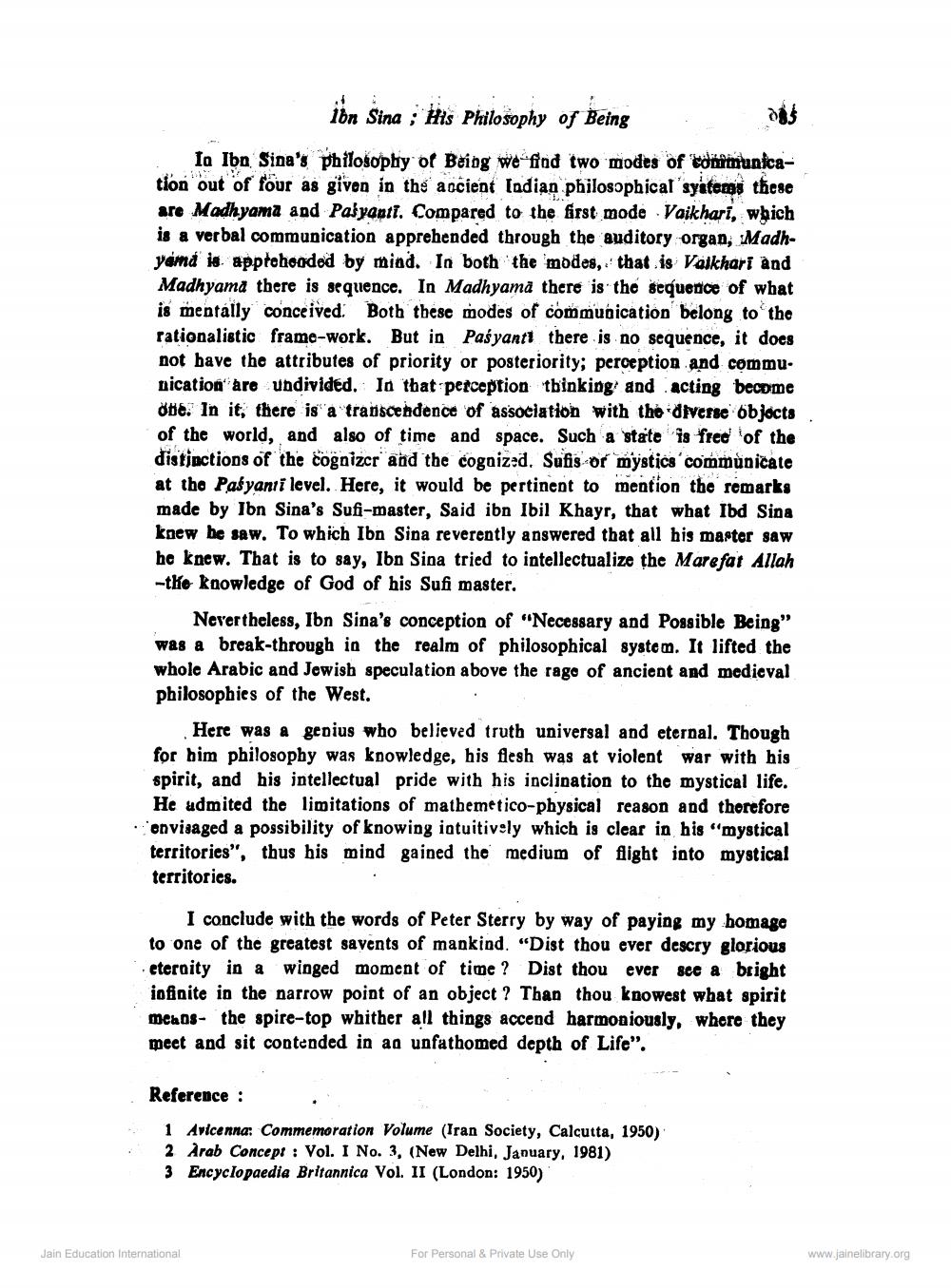________________
ión Sina ; His Philosophy of Being
Ia Ibn Sina's philosophy of Being we find two modes of communication out of four as given in the accient Indian philosophical systems these are Madhyama and Palyanti. Compared to the first mode Vaikhari, which is a verbal communication apprehended through the auditory organ, Madhyamd is. apptehooded by mind. In both the modes, that is Valkhari and Madhyama there is sequence. In Madhyama there is the sequence of what is mentally conceived: Both these modes of communication belong to the rationalistic frame-work. But in Pas yanti there is no sequence, it does not have the attributes of priority or posteriority; perception and commu. nication are undivided. In that perception thinking and acting become obe. In it, there is a transcendence of association with the diverse objacts of the world, and also of time and space. Such a state is free of the distinctions of the cognizer and the cognized, Sufis or mystics' communicate at the Pasyanti level. Here, it would be pertinent to mention the remarks made by Ibn Sina's Sufi-master, Said ibn Ibil Khayr, that what Ibd Sina knew he saw. To which Ibn Sina reverently answered that all his master saw he knew. That is to say, Ibn Sina tried to intellectualize the Marefat Allah -the knowledge of God of his Sufi master.
Nevertheless, Ibn Sina's conception of "Necessary and Possible Being" was a break-through in the realm of philosophical system. It lifted the whole Arabic and Jewish speculation above the rage of ancient and medieval philosophies of the West.
Here was a genius who believed truth universal and eternal. Though for him philosophy was knowledge, his flesh was at violent war with his spirit, and his intellectual pride with his inclination to the mystical life. He admited the limitations of mathemetico-physical reason and thorefore 'envisaged a possibility of knowing intuitively which is clear in his "mystical territories", thus his mind gained the medium of flight into mystical territories.
I conclude with the words of Peter Sterry by way of paying my homage to one of the greatest savents of mankind. “Dist thou ever descry glorious eternity in a winged moment of time? Dist thou ever see a bright iofinite in the narrow point of an object? Than thou knowest what spirit meaos- the spire-top whither all things accend harmoniously, where they meet and sit contended in an unfathomed depth of Life".
Reference :
1 Avicenna: Commemoration Volume (Iran Society, Calcutta, 1950) 2 Arab Concept : Vol. I No. 3, (New Delhi, January, 1981) 3 Encyclopaedia Britannica Vol. II (London: 1950)
Jain Education International
For Personal & Private Use Only
www.jainelibrary.org




